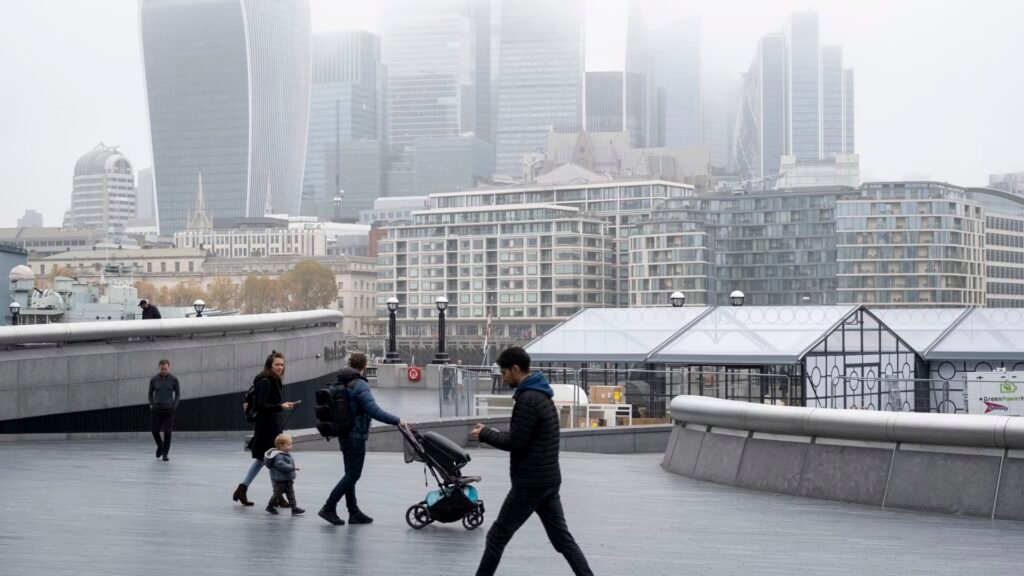Bank of England in the City of London on November 6, 2024 in London, United Kingdom. The City of London is a city, formal county and local government district containing the main central business district (CBD) of London. The City of London is commonly referred to simply as the “City” and is also colloquially referred to as the “Square Mile”. (Photo by Mike Kemp/In Pictures via Getty Images)
Mike Kemp | In pictures | Getty Images
The British economy failed to achieve growth in the three months to September. revised figures The British Office for National Statistics showed this on Monday.
A preliminary estimate For the third quarter, which the ONS released last month, it said that UK GDP grew by 0.1% over the period. However, final data released on Monday showed GDP growth of 0% quarter-on-quarter.
The British pound was slightly lower against the U.S. dollar on Monday, trading at around $1.2566 at 8:37 a.m. London time.
Monday’s figures deal another economic blow to Britain after a series of weak data prints dampened sentiment and raised questions about the newly elected Labor government’s financial strategy.
earlier this monthData from the ONS showed the UK economy unexpectedly contracted by 0.1% in October. It was the country’s second consecutive monthly GDP decline, following a 0.1% decline. in September.
Looking ahead, Paul Dales, chief UK economist at Capital Economics, said he expected the UK economy to remain stagnant in the final quarter of 2024 – but his assessment was not entirely pessimistic.
“Overall, these data suggest that after hitting a record high in the first half of the year, the economy stalled in the second half due to a combination of the ongoing burden of higher interest rates, weaker external demand and some concerns about economic policies in the budget,” he said in a note on Monday.
“We expect 2025 to be a better year for the economy than 2024. However, recent data suggests that the economy no longer has much momentum as the year ends.”
Meanwhile, inflation appears to be rising again. The ONS said last week that UK inflation rose to 2.6% in November, marking the second consecutive month of price increases.
The Bank of England then maintained its key interest rate stable at 4.75%. While markets were not expecting a rate change at Thursday’s Monetary Policy Committee (MPC) meeting, there was a surprise that three MPC members voted for a rate cut (a Reuters poll had predicted only one member would vote for a cut). would).
While Governor Andrew Bailey has done so previously signaled Four rate cuts could be possible next year, with traders divided over when the Bank of England will cut interest rates again. LSEG data shows markets are expecting further dovishness at the MPC meeting in February, with a slim majority of traders expecting a 25 basis point rate cut in March.
It comes after British Chancellor of the Exchequer Rachel Reeves End of October presented the Labor government’s first budget since replacing the long-standing Conservative government in July.
The budget included plans by Prime Minister Keir Starmer’s government to increase taxes by 40 billion pounds ($50.5 billion). Reeves said at the time that this would be achieved through a series of new measures, including an increase in employers’ social security contributions – an income tax – as well as an increase in capital gains tax, etc Elimination of winter fuel payments to pensioners.
Some of the guidelines drew widespread criticism. The trigger, for example, was the increase in the social security payroll tax Warnings of companies that are less likely to hire new workers a report from recruitment site Indeed earlier this month, suggesting the policy has already impacted UK job vacancies.





